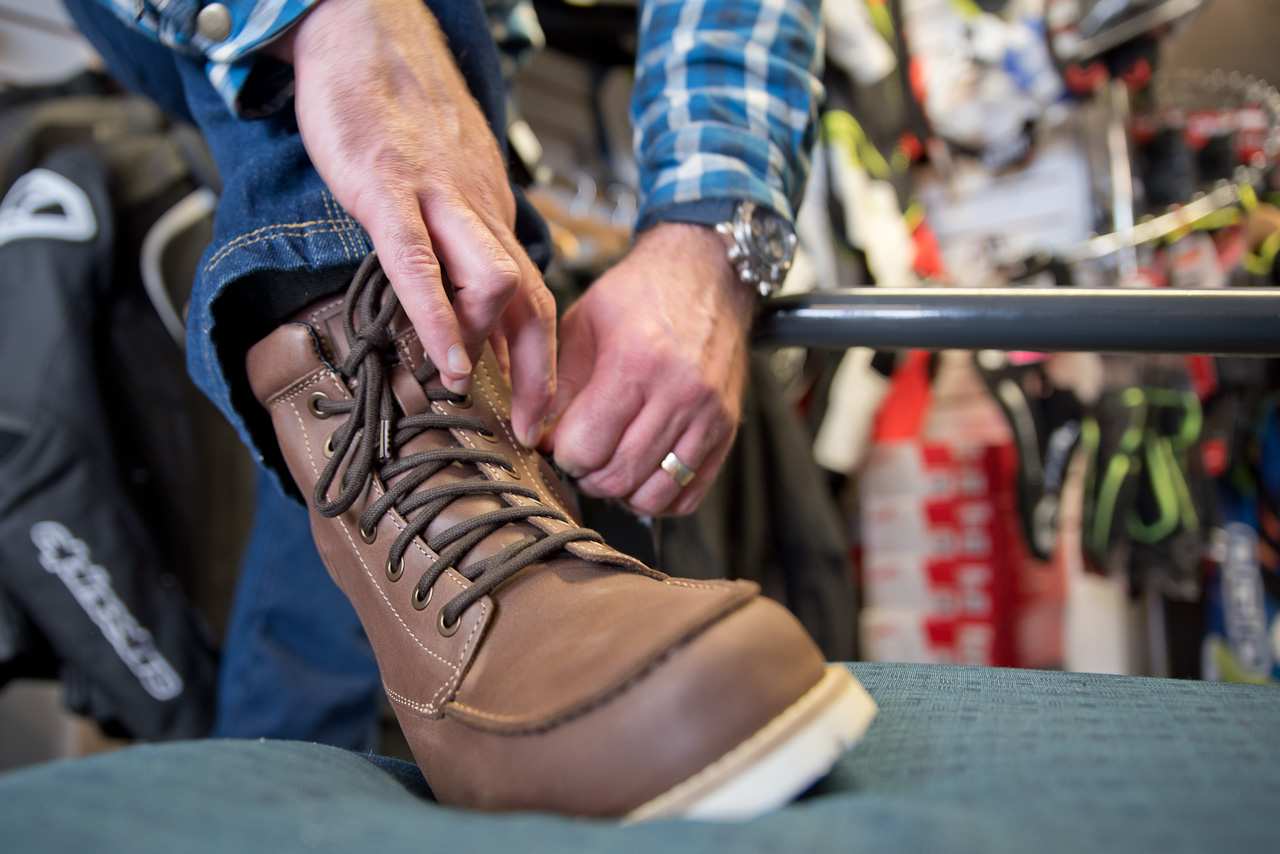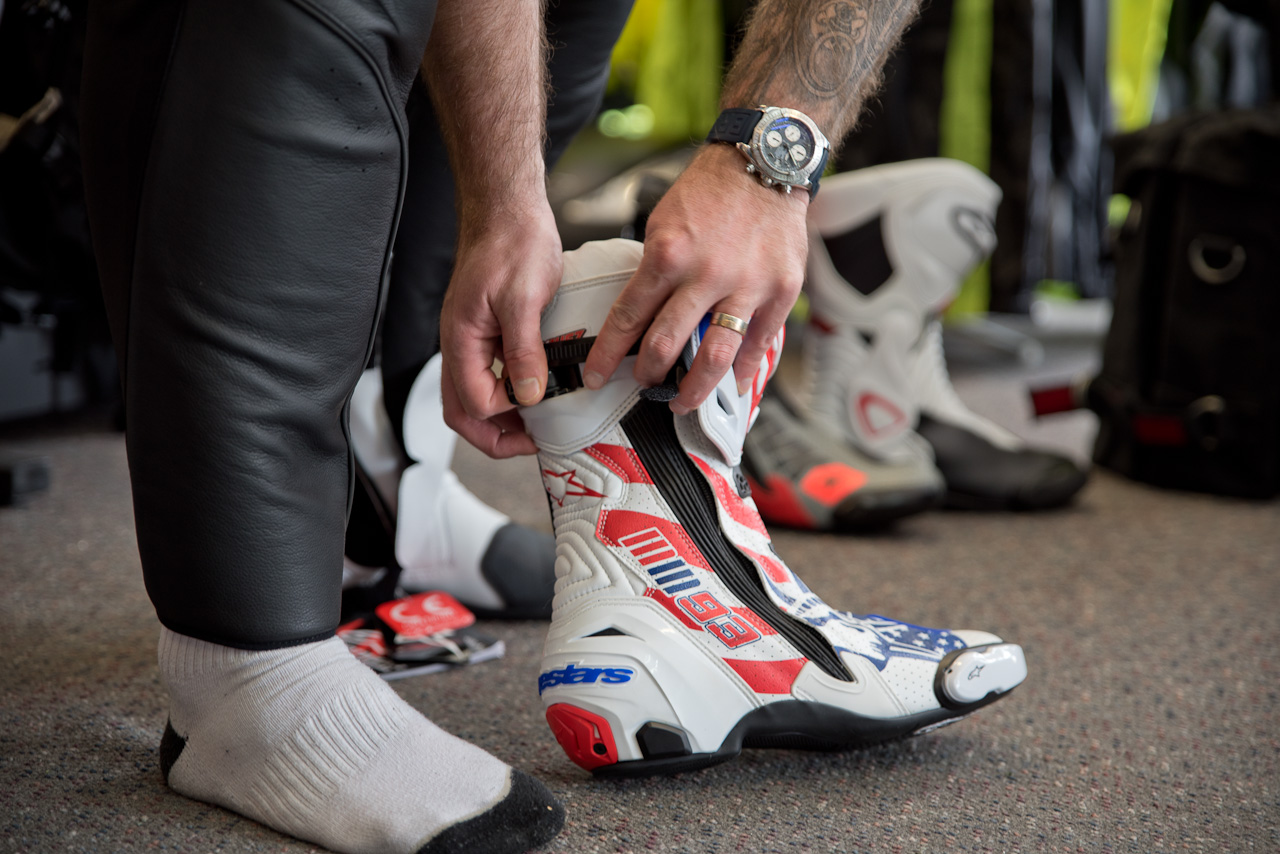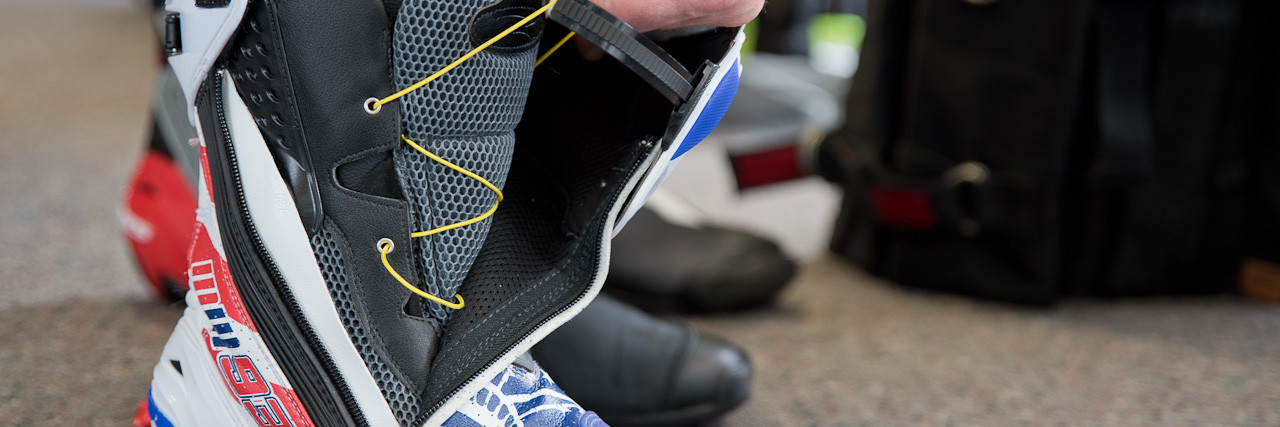Choosing boots
The most common parts of the body to be impacted in a motorcycle crash are the legs and feet, so protecting them is a priority.
Weighing up your needs before choosing boots

Street footwear offers virtually no protection at all, so purpose-designed motorcycle boots are a must. However, there’s a very wide choice.
The ideal choice of boots for you comes down to how you’ll use them. If you’re going to do much walking, a race boot isn’t going to work. Many adventure boots aren’t much better. A touring boot can be a good compromise, especially with a breathable, waterproof construction. But the soles can wear quickly and the waterproofing may break down with a lot of walking.
A custom or cruiser boot is self-selecting if you ride that style of bike, and they’re a fair all-round compromise.
If you spend a lot of your day walking around, and changing out your shoes isn’t practical, then a good pair of purpose-designed ankle boots might be your best choice. Just look for those protective features.

Standards and ratings for boots
Motorcycle boots should meet the EN 13634:2015 standard, but you’ll find some showing a different CE number, such as CAT. II - 89/686. This is a standard for protective workwear, not a motorcycle boot. It’s more common with streetwear style boots because they don’t have sufficient protection to meet the higher motorcycle standard.
Buying used boots
Condition is the big factor. Motorcycle boots aren’t always good at standing up to wear from walking. Waterproofing can deteriorate with wear too, as the seams get stretched. If you’re buying used, don’t count on it.
Design and type of boots
Race style boots
Race style boots offer the most protection.They have a solid construction that braces the ankle, with armoured cups for the heel and toe. The boots extend up the calf with solid armour protecting the shin. A steel shank in the sole resists distortion and the whole boot is designed to slide, resist abrasion and have the toe sliders touch down in corners.
The downside is that race boots aren’t designed to walk around in. They’re usually uncomfortable and impractical off the bike. Most are designed for hot summer days, offering no water-resistance.
Adventure style boots
Adventure style boots look like motocross boots, stretching right up close to the knee, but with a sole designed to grip rather than slide. Construction varies from relatively soft and pliable to quite rigid, the trade-off being between comfort/ease of walking and protection. A solidly constructed, full-on adventure boot offers excellent protection.
Touring style boots
Touring style boots have the same shape as a race boot and have several of the same features. This usually includes heel and toe cups, a sole shank and sometimes shin armour and even toe sliders. But the ankle area is designed to flex more, making them a more practical proposition off the bike.
While not as protective as a full race boot, they’re still up there. Many are marketed as waterproof (actual performance varies widely), usually with a breathable membrane.
Cruiser style footwear
Cruiser style footwear is usually designed to look like a conventional boot, sometimes with a showy buckle or two, and can be short or long. Construction and protection varies. The best types have rigid cups built in for heel and toes, a steel shank in the sole and thick leather stretching up over the shin.
Boots like these offer a reasonable balance of protection and off-bike practicality, and they can be taken for normal streetwear. Some waterproof versions are available.
Streetwear style
Popularity of streetwear style boots has taken off in recent years. They vary a lot in appearance and protection, but the common feature is an ankle-boot shape. Although lacking shin protection, purpose-made boots like these are usually a better choice than a conventional ankle boot.
The best will have heel and toe cups, a sole shank, protection around the ankles, secure closures and reinforcing where the top of the boot meets the gear lever. Off-bike comfort and practicality, with the appearance of normal footwear, are the draw cards.
Remember – wear all the gear
A crash can happen at any time, often when you least expect it. So, make sure you wear 'All The Gear All The Time' – ATGATT.




